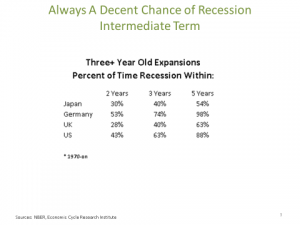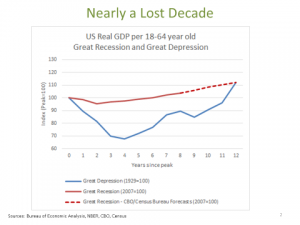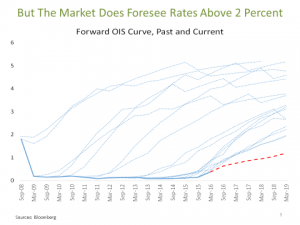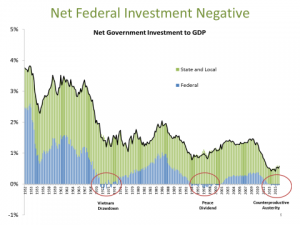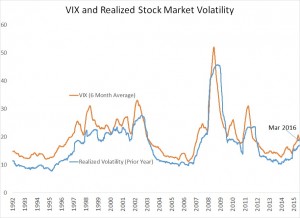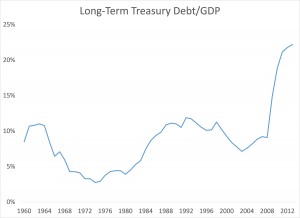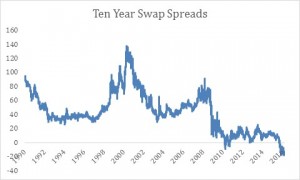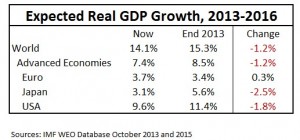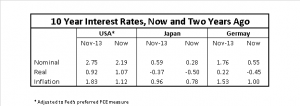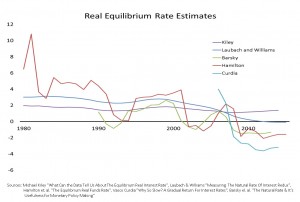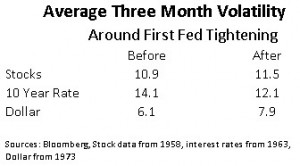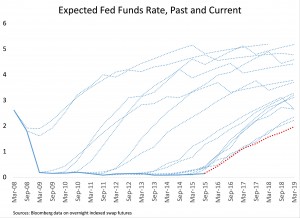12/29/2015
Bernie Sanders had an op Ed in the New York Times on Fed reform last week that provides an opportunity to reflect on the Fed and financial reform more generally. I think that Sanders is right in his central point that financial policy is overly influenced by financial interests to its detriment and that it is essential that this be repaired. At the same time, reform requires careful reflection if it is not to be counterproductive. And it is important in approaching issues of reform not to give ammunition to right wing critics of the Fed who would deny it the capacity to engage in the kind of crisis responses that have judged in their totality been successful in responding to the financial crisis. The most important policy priority with respect to the Fed is protecting it from stone age monetary ideas like a return to the gold standard, or turning policymaking over to a formula, or removing the dual mandate commanding the Fed to worry about unemployment as well as inflation.
Sanders is right that Fed governance has been and is overly tied up with the financial sector. Each of the 12 regional Fed s has a board of directors that is made up of 9 people—three banking representatives, three private sector non-banking representatives and three public interest representatives. The fact that a member of Goldman Sachs’ board at the time of the 2008 crisis was the “public interest” Chairman of the New York Fed board is to put it mildly indefensible.
More generally, it is not clear why a government institution with vital policy responsibilities should have a role in governance for the private sector. Yes, advice on market conditions and the like is needed but this can be sought from advisory committees. Yes, Dodd Frank did clean things up some by removing bankers from the selection process for regional bank presidents and orienting regulatory responsibility towards the Washington. But it is hard to imagine an appropriate governance activity for business figures with respect to the Federal Reserve System. Nor is it clear why banks should in any sense be “shareholders” in the Federal Reserve System.
I am less certain as to whether Sanders particular reform of making regional presidents senate confirmed is wise given the dysfunctionalities of the Senate process. Also, I suspect that this reform would strengthen the NY Fed with its close ties to Wall Street and hawkish regional presidents in ways that Sanders would not like.
A separate issue from Sanders concern with governance is his concern with who holds the full time senior positions within the Fed. He asks rhetorically whether the CEO of Exxon should be head of the EPA or FCC should be stuffed with former Verizon executives. This is a difficult issue. There is a tension between acquiring expertise and avoiding cooptation or cognitive capture. In fact many FCC chairs have had industry backgrounds including both Obama FCC chairs who pushed net neutrality approaches that industry loathed. It would be a valuable study but it is not my impression that as a general matter officials who come from industry have been systematically softer on industry than those who have come from other backgrounds. It is worth pondering that figures much respected for their commitment to aggressive financial regulation like Arthur Levitt came into their positions from full time roles in industry whereas the principal regulators in place before the 2008 crisis—Bernanke, Geithner, Cox– came from public sector backgrounds. Franklin Roosevelt was hardly a pushover to the financial industry. He famously made former stock-operator Joseph Kennedy the inaugural leader of the SEC on the theory that it takes a thief to catch a thief.
Sanders proposes to make the Fed more transparent and accountable by releasing not just minutes but transcripts six months after meetings rather than the current five years. I am not sure I understand the logic here. Monetary policy accountability is essential but so is accountability for decisions of war and peace or protection of the environment. No one expects transcripts from the Pentagon’s war room or the EPA senior staff meetings. The Supreme Court Justices meet alone, without clerks or stenographers, because the best decisions tend to come when policymakers can deliberate privately before reaching conclusions. This encourages out of the box thinking and forceful dissent while minimizing grandstanding. Why should monetary policy be different? It seems to me that Janet Yellen has done great work over the years in pushing the Fed to be more open and that if further steps are to be taken, they should be in the directions she has pioneered such as more frequent press conferences.
With respect to proposals to audit the Fed, I think the issues are really of truth in labeling. There is no question that the Fed like every other part of government should be subject to independent audit. My understanding is that this is currently the case. If there are lacunae in current procedures, these should be pointed up and repaired. This is not the focus of current proposals like those of Ron and Rand Paul who would prefer to abolish the central bank and whose ideas are not so much about auditing the Fed as subjecting it to political control and straitjacketing it. Surely Senator Sanders should not wish to curtail the Fed’s ability to act with discretion to insure a continued flow of credit to businesses and households in the event of an economic downturn or financial crisis.
On the substance of monetary policy, I have been clearly on the dovish side of the Fed for quite sometime and think the risks of the last rate increase exceeded the benefits so I agree with Sanders general thrust. I prefer the “do not raise rates until you see the whites of inflation’s eyes” to Sanders rather arbitrary 4 percent unemployment target.
I did not feel strongly but am inclined to agree with Sanders that the Fed should not have paid interest in excess reserves while it was setting the Fed funds rate in the zero range. However, when rates are raised it is a matter of necessity that the Fed either pay interest on reserves or what is essentially equivalent offer Treasury bills to banks which soak up their excess cash. In a positive interest rate environment, there is no way that banks will or should hold on to zero interest rate cash. I do not think there would be any expert support for Sanders views here.
On regulatory policy, no one is for gambling with insured deposits. But Sanders fails to recognize some of the tensions that make regulatory policy so difficult. Loans to small businesses which he likes are far riskier than holdings of securities that are marked to market on a daily basis so if banks focused on traditional lending they would be riskier than they are today. Indeed the majority of the world’s banking crises over the last three centuries and over the last quarter century have come from traditional lending especially against real estate. Making banks safer means reducing their dependence on traditional lending activities so balances must be struck.
Sanders asserts as many do that Glass Stegall’s repeal contributed to the crisis. I may not be objective as I supported this measure as Treasury Secretary but I do not see a basis for this assertion. Virtually everything that contributed to the crisis was not affected by Glass Steagall even in its purest form. Think of pure investment banks Bear and Lehman, or the GSEs Fannie and Freddie, or the banks Washington Mutual and Wachovia or AIG or the growth of the shadow banking system. Nor were the principle lending activities that got Citi and Bank of America in trouble implicated by Glass Stegall.
Moreover preventing financial institutions from diversifying into multiple activities can actually make them more likely to fail. Imagine how much better the outcome would have been if Lehman had sold itself to a large bank during 2008. There is the also the further point that without the repeal of Glass Stegall it would have been much more difficult to aggressively use the discount window to contain panic following Lehman s fall.
We currently have a system in which institutions have higher capital requirements if they are larger, more complex or more interconnected. I think there is a good case to be made that capital requirements should be further increased and further graduated with size and complexity. This would tend to encourage deconsolidation and is I think the right 21st century response to the concerns about concentration in banking.
Finally, stepping back from Sanders specifics, I agree with his core claim that the excessive power of financial interests shapes financial policy to an unhealthy extent. I saw this during the debate on Dodd Frank when there were nearly five registered lobbyists for every member of Congress. It’s worth pondering how policy would be different if special interests were kept in check. Here are my top five:
First, the financial regulatory agencies would be adequately resourced and would not be under pressure to kowtow to legislators pushing their contributors interest. CFTC head Tim Massad had it right when he condemned the recent budget agreement as undercutting the ability to regulate derivatives in a serious way.
Second, the Balkanized character of US banking regulation is indefensible and would be ended. The worst regulatory idea of the 20th century—the dual banking system—persists into the 21st. The idea is that we have two systems one regulated by the States and the Fed and the other regulated by the OCC so banks have choice. With ambitious regulators eager to expand their reach, the inevitable result is a race to the bottom.
Third, the current SEC and CFTC would be combined and charged with regulating in a coherent way all financial markets with respect to market integrity, manipulation issues, insider trading, transparency, fairness of execution, and systemic risk. When there were securities markets and commodity markets it may have made sense. It no longer is defensible when the vast majority of “commodity trading” is in financial derivatives. The current system persists only so that multiple congressional committees can maintain jurisdiction over financial regulation and reap the benefits in terms of campaign contributions. Quite possibly, it would be a good idea to give the new agency if it was strong jurisdiction over fiduciary rules for investment and pension advisors.
Fourth, either the new agency formed out of the SEC and CFTC or the existing FSOC would take on systemic risks associated with asset management in a serious way. While the asset managers have the better side of the argument when they claim not to be systemic in the sense of JP Morgan or Goldman Sachs, their activities are systemic and egregiously under regulated. It took far far too long to reach a still unsatisfactory solution with respect to money market funds. And ETFs are as likely as anything else to be the source of the next major bit of financial drama.
Fifth, there would be appropriate taxation of financial activities and the financial sector. Among the obvious reforms held back only by special interests are the highly preferential treatment of carried interest, the privileged treatment of dividends and capital gains, the ability of financial institutions to reduce their tax liabilities by using off shore tax havens and the tax deductibility of huge fines paid to resolve allegations of wrongdoing.
Senator Sanders is right that there is more to be done to respond to the long standing problems pointed up by the financial crisis and he is right in his concern about the way in which special interests distort the process. These notes will have served their purpose if they help to channel legitimate energy in the most constructive directions.
